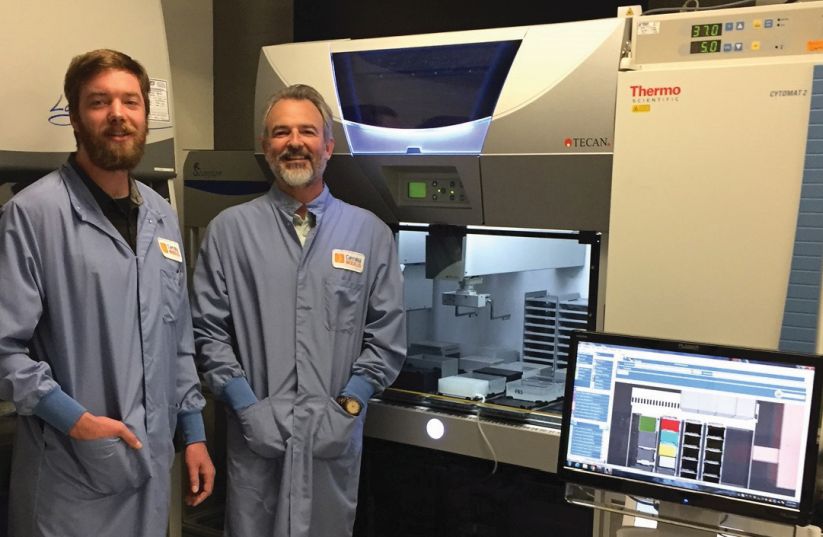Keywords:
Access to human pluripotent embryonic stem cells is enabling Genea Biocells to pioneer novel therapies to treat a number of neuromuscular diseases. Drawing on almost 30 years of research heritage, the company is using its expertise to model spinal muscular atrophy and facioscapulohumeral muscular dystrophy to identify potential therapies.

Genea Biocells was established in 2017 as an independent company born out of the R&D arm of Genea Fertility – a world-leading IVF clinic in Australia. The team of 20 scientists based in San Diego, California, specializes in drug discovery and therapy development to treat neuromuscular diseases. Monica Hayhurst Bennett, director of preclinical research at Genea Biocells, explained: “In the early days, the IVF clinic made a concerted effort to collect pluripotent embryonic stem cells that were excluded as part of preimplantation genetic screening. Patients were asked if they wanted to donate these cells for research and, over time, we’ve created one of the world’s largest and most varied private banks, with over 150 cell lines representing more than 30 diseases.”
Monica continued: “We are in our early days as a drug discovery company, and have three main facets to our organization. Firstly, we supply stem cells and media reagents to strategic academic partners. We also carry out CRO work in collaboration with pharma companies that want to focus on muscular dystrophies we are not actively pursuing ourselves, such as Duchenne. Finally, we have our scalable discovery platform that differentiates skeletal muscle cells from human pluripotent stem cells and supports our in-house assay development.”
Genea is primarily focused on two conditions; spinal muscular atrophy (SMA) and facioscapulohumeral muscular dystrophy (FSHD). SMA affects one in 10,000 people, with a carrier frequency of one in 40 in the general population. FSHD is another of the most common muscular dystrophies – affecting one in 20,000 – and causes progressive loss of muscle strength. Genea has used its expertise to develop the world’s first human stem cell model of FSHD, and is using this platform to search for therapeutic drug candidates. “SMA and FSHD are monogenic diseases, which makes them good candidates for screening,” Monica added. “This has resulted in an abundance of stems cells to work with, and has naturally focused our research efforts. We primarily concentrate on generating phenotypic assays for screening, elucidating different metabolic pathways in cells and understanding pretranslational gene expression. Once the team has consolidated an assay, it can be passed on to the automation team.”
Charles Martin, an automation scientist, continued: “Our Fluent® Automation Workstation is central to everything that we do; it’s our workhorse system and is an essential part of the screening process, carrying out all the liquid handling and supporting our analyzers and imaging platforms. The Fluent system is equipped with a Multiple Channel Arm, an integrated incubator and a laminar flow HEPA hood to run our cell-based assays. The HEPA hood creates a sterile, positive pressure environment inside the enclosure, and so we have very few contamination issues. For cell-based assays, we manually create the cell suspension, then the Fluent transfers this to either 96- or 384-well culture plates. All downstream manipulations are scheduled through FluentControl™, from basic media changes to more complex liquid handling procedures involving the dilution of stock compounds to biologically relevant concentrations. In addition, we use the system for non-sterile applications, including immunocytochemistry for high content phenotypic analysis. We process around 1,000 compounds – taken from our small to medium-sized library – per screen, and the 384-channel pipetting arm is very practical for this work; it’s obviously faster than an eight-channel option. I worked with a Freedom EVO® platform in a previous job, so there wasn’t a huge learning curve moving to the Fluent, as there are enough similarities between Freedom EVOware® and FluentControl.”
"There are things the system can do that I simply can’t do manually."
Cullen Pivaroff, a scientist at Genea Biocells, added: “I’m fairly new to laboratory automation and I have discovered that, in addition to eliminating manual work and improving the accuracy, there are things the system can do that I simply can’t do manually. I have a background in cell culture and handling fragile cell types, but the Fluent is so much gentler than working by hand; it’s a well-configured and well-built system.”
Charles continued: “There are so many diverse applications for the Fluent, and Tecan really values its working relationships with people who are using the system. I recently went to a users’ round table meeting, and it was great to see the Tecan engineers and software developers responding to our suggestions. They seemed really keen to hear our feedback, and I’m sure a number of the ideas discussed will make it into future software updates; they are always looking for ways to keep developing the platform.”
For research use only. Not for use in clinical diagnostics.
To find out more about Tecan’s drug discovery solutions, visit www.tecan.com/drugdiscovery
To learn more about Genea Biocells, go to www.geneabiocells.com
Keywords:









